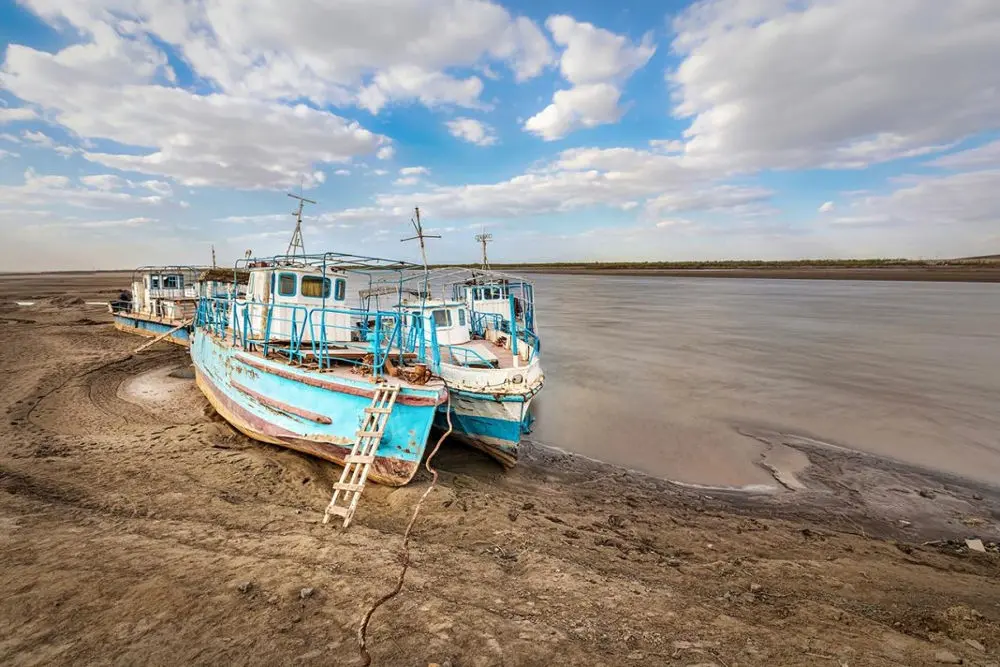The Kosh-Tepa grand irrigation canal, which is under construction in Northern Afghanistan from 2022, can drastically reduce the volume of irrigation water in the middle reaches of Amu-Darya in Uzbekistan, thus becoming a time mine in the coming years. What this canal is all about? It’s a massive hydraulic structure that spans 285 km, beginning at the Amu Darya in Balkh Province and ending in Faryab. The canal is expected to be 100 m wide and 8 point 5 m deep at its beginning. Given that the canal’s bottom is made of earth rather than concrete, there will be significant water losses as a result of soil filtration. The work is being done in three shifts, and according to images from space, 108 kilometers have already been laid. The rest should be finished in five years, by 2028. Over 500,000 ha of dry land in Afghanistan are expected to be irrigated with water from this canal. How important this project is for Kabul is evidenced by the amount of funding — $700 million, and this from the poorest Asian country.
As of 2023, Tajikistan, Uzbekistan, and Turkmenistan each has a quota of 9.8 km3, 23.6 km3, 22 km3 of water respectively from the transboundary Amu-Darya (determined as early as 1987). Afghanistan will be able to remove 10 km3 of water after the Kosh-Tepa canal is completed in five years. The nations could lose up to 15% of their irrigation water as a result. Recharge levels in the Amu Darya basin have fallen to 65-85% as of June 2022, which is still below normal levels. According to experts, the implementation of Afghan megaproject will not only cause economic/social problems in Uzbekistan and Turkmenistan (the canal flows into the Tajik part of the Amu-Darya River), but could also lead to an ecological disaster for the whole CA.
After all, the Amu-Darya is the main source not only for remains of the dried-up Aral Sea, but also for reservoirs and canals in the middle reaches of the river. There is a threat that the river’s water may not reach its mouth at all. Protected areas with unique nature, primarily the Lower Amu-Darya State Biosphere Reserve, which is part of the UNESCO World Network of Biosphere Reserves, are also at risk of being left without water.
To date, the CA countries have no legal mechanisms to settle the issues of transboundary Amu-Darya flow utilization with Kabul. Afghans believe they have the full right to use the Amu-Darya’s water in accordance with international standards and transboundary country law. While the five CA countries have a great experience in dialog and reaching agreements among themselves on water issues, they have no such practice with Taliban, nor do they have leverage over Kabul.

The Council of Heads of Founding States of the International Fund for Saving the Aral Sea met in Dushanbe on 15 September this year. Uzbek President Sh. Mirziyoyev was compelled to acknowledge that the issue of scarce water supplies and their inefficient use in Central Asia “has become acute and irreversible and will only worsen further.” He believes that in order to address all of this in the long run, additional concerted steps must be developed and implemented within the fund. For his part, Kazakh President K.Tokayev forecast that by 2050, five million people would have migrated within their own country due to the effects of climate change, causing damage to the economy of 1.3% GDP annually and a 30% decline in crop yields. The peculiarity of this meeting was the presidents of CA countries’ shared concern over the deteriorating water/environmental conditions in the region, as well as the participants’ desire to advance their own countries’ interests at the expense of those of their neighbors, rather than to make concessions and come to compromises on contentious issues. As a result, the leaders could only agree to keep talking about the issue of water scarcity and to seek aid from outside parties like the UN, the World Bank, the EU, and Russia for financial and technological support.
Uzbek experts contend that it is also essential for all five Central Asian nations to work together practically to solve the most pressing water use issues rather than simply discuss at various fora. Consider the distribution of water resources between “upstream” and “downstream” countries during the USSR, when irrigation farming and hydropower in CA republics were interconnected and there were no issues with water shortages. In the winter, energy resources (coal, gas) from Kazakhstan, Turkmenistan, and Uzbekistan were used to provide electricity to Kyrgyzstan and Tajikistan to make up for the capacity lost by their HPPs and for water storage in their reservoirs. In the summer, Kyrgyzstan and Tajikistan provided hydroelectric power to their neighbors as well as irrigation water to the “downstream” nations. Russia could help with the modernization of antiquated Soviet irrigation canals and hydraulic structures as well as the building of small hydropower plants, but only if the CA countries themselves agree to cooperate, as well as on what they will do, who will be responsible for it, and how much it will cost.
Without cooperation and coordinated efforts from all five states to find a solution, without altering the development of a new strategy and approaches to rational water use and water resources management, the situation may get out of control much faster than the pessimistic forecasts indicate, according to the general opinion of experts from scientific circles in CA countries.
Many regions of Kazakhstan and Uzbekistan (as it did in Uzbek Karakalpakstan) could run out of drinking and irrigation water within the next 10 to 20 years. As a result, less land will be planted with crops, and there will be more electricity shortages. Mass migration to cities and neighboring countries will start as a consequence of desertification.














Comments